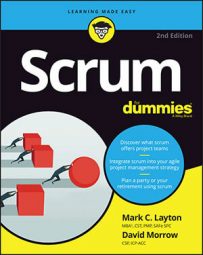On top of this, readers can now choose between reading on desktops, mobile platforms, and less and less, traditional hardback and paperback books. Now, different forms of media are competing against each other for the same content.
In this new publishing environment, traditional revenue models are changing for advertising and subscriptions so new models are needed that can take advantage of this new digital world. But publishers are still discovering those models.
The music industry experienced a similar seismic shift. Traditional album buying flew out the door when iTunes flew in. Free and often illegal music downloads stirred up a fresh debate on copyright law (enriching scores of lawyers along the way), and avenues for music today are dramatically different from those 10 and 20 years ago. But new songs and albums are created all the time, and musical life goes on. It just looks different.The same can be said of publishing. For some organizations, massive industry changes are terrifying; for others, opportunity is recognized, flexibility is sought, and inspection and adaptation are seen as paramount. Some publishers say that because of the rapidity of change, they’re not sure which data they should use to form their decisions. The sand is shifting under their feet.
Scrum can help the publishing industry flourish. The very qualities that so many people in the industry find unsettling — rapid change, shifting consumer needs and desires, and uncertain sources of revenue — are the ones in which scrum excels.
Inspecting, adapting, and refactoring
Inspection, adaptation, and refactoring are the heart of scrum, and they fit the world of publishing. Publishing has its own set of challenges and scrum solutions.Changing readers
What readers expect from a book, magazine article, or newspaper feed is changing. Immediate information and instant gratification are the norm. Unless the author is already a huge best seller with a wide following, most readers won’t sit down to finish a 1,000-page tome.Incorporating rapid feedback from readers, via short articles, blogs, and analytical tracking tools for reader click-through rates and responses, a flood of data can be accessed. News media, publishers, and individual authors can quickly see what readers are responding to and adjust accordingly.
Not only does this rapid feedback cycle mean better content, but it also means faster monetization. As you inspect and adapt on the go, you’re able to follow those paths that lead to more clicks and hits, and therefore incorporate more revenue streams through advertising and sales.
Changing writers
Hugh Howey broke more than one mold with his New York Times best-selling novel Wool. He published the original short story on Amazon for 99 cents a copy and received such overwhelming positive response that he kept on writing.Howey wrote and self-published five serial stories, getting feedback from readers with each one, and combined them to create the book Wool Omnibus (self-published by Broad Reach Publishing). It landed on the Times best-seller list and created a sweet seven-figure revenue stream for him.
Serial stories are produced in sprints. Feedback comes from readers and potential book buyers. Some authors use self-publishing where each detail could be inspected and adapted along the way. The entire success story was an unintentional variation of scrum.
After self-publishing and reaching the best-seller list, Howey signed a contract with a traditional publishing firm, Simon & Schuster. In yet another mold-shattering move, he sold only the print rights to the publisher, keeping all digital rights and proceeds for himself.
Changing products
What and how people read are in flux. Graphic novels, manga, and interactive serials combine with novels, articles, and blogs to create a wide net within which authors place their work. Add e-readers, smartphone apps, and steadily decreasing hard copy numbers, and you have a changing world.No author or reader is untouched by this literary revolution. T.S. Eliot’s classic epic poem The Waste Land has its own iPad app, but it isn’t just a copied-and-pasted edition of the text. The app incorporates these features:
- A filmed performance of the poem by Fiona Shaw
- Audio readings by T.S. Eliot and actors such as Alec Guinness and Viggo Mortensen
- Interactive notes to help the reader with cultural references and poetic nuances
- Videos of literary experts providing insight on the masterpiece
- Original manuscript pages that show the reader how the poem developed under the guidance of Ezra Pound
For publishers and authors alike, scrum’s feedback cycle allows for fast input and, therefore, accelerated time to market, creating products that customers want and will pay for. Those who embrace this change and incorporate agile frameworks (such as scrum) that allow for it are excelling in this new environment.
“Survival of the fastest to change” is the mantra. See change as an opportunity, and you’ll come out on top.
Applying scrum
As in software, publishing content can be easily and frequently inspected, adapted, and refactored until it’s ready for publication. For short works, the process is easier, but it can be adapted to all sizes and lengths.Creating content for YouTube, for example, is a natural for inspection and adaptation. Post content, and with analytics, you can see an amazing array of data, such as how many people saw it, did they subscribe to your channel, how long they stayed, and what links they followed.

